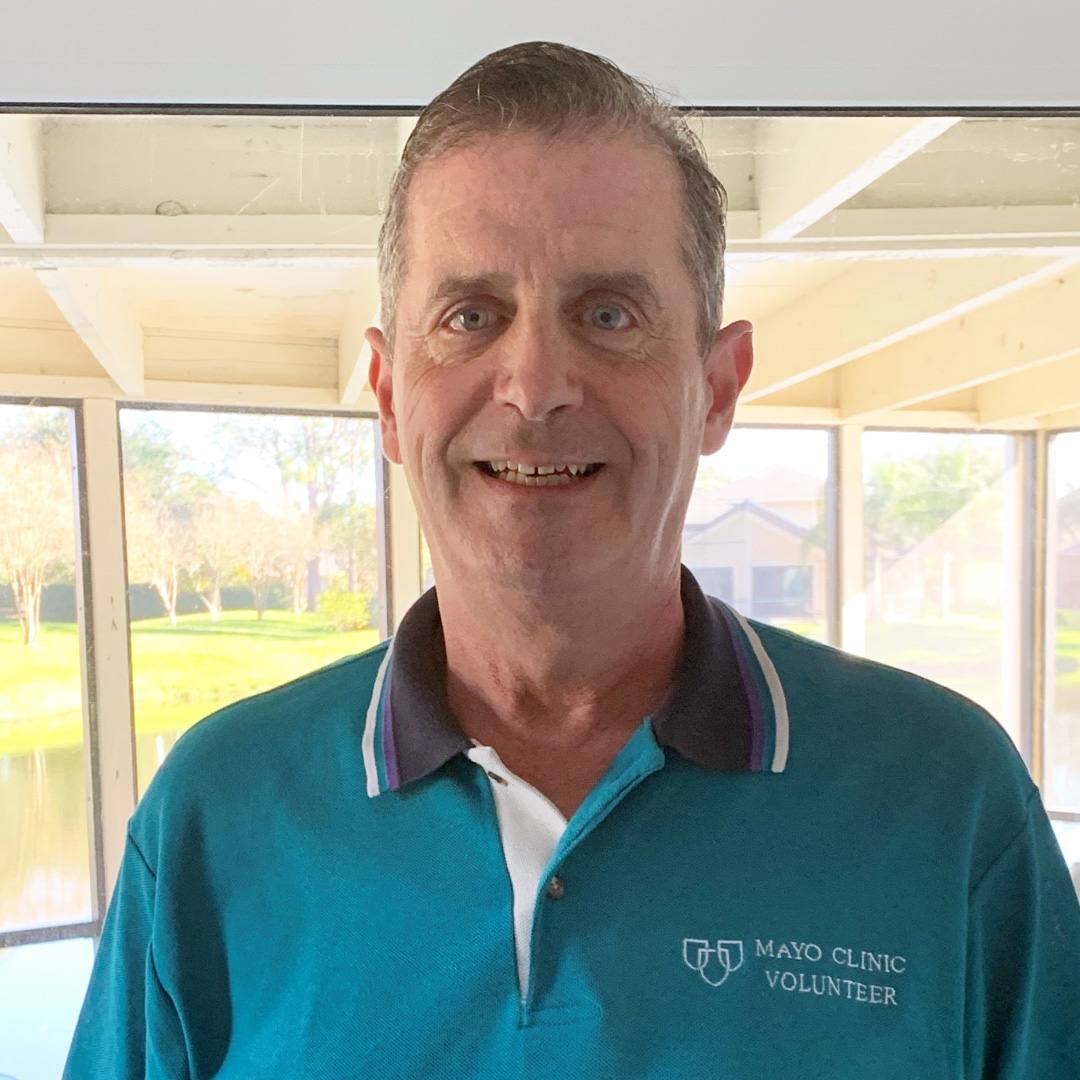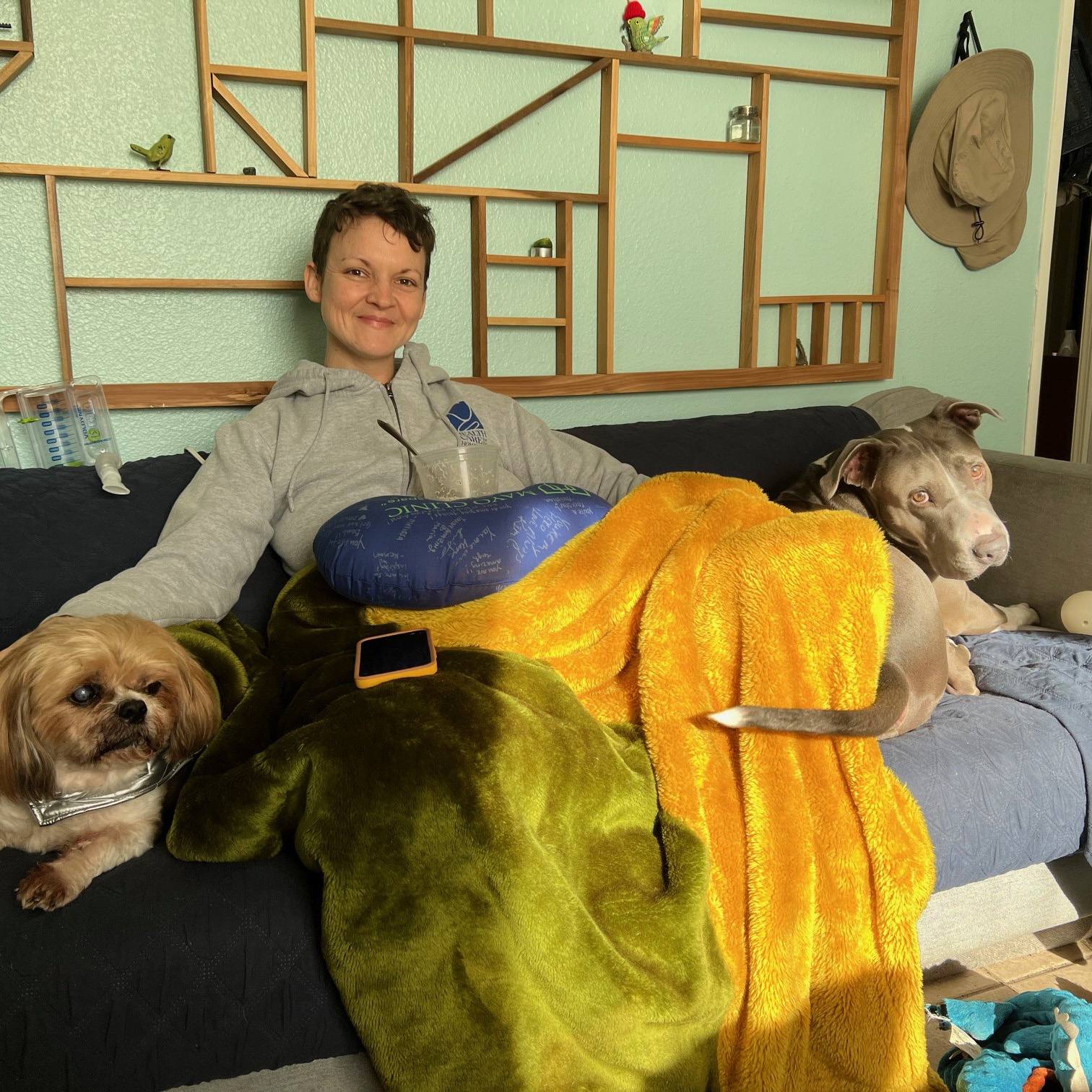-
Sharing Mayo Clinic
Pain Rehabilitation Center Offers Freedom From Debilitating Symptoms

Carolyn Judson repeatedly tried to no avail to get to the bottom of the episodes of shaking, sensitivity to touch and other mysterious symptoms that drastically affected her quality of life. Then she came to Mayo Clinic where she was referred to a three-week program that she says gave her her life back.
Carolyn Judson walked out of an appointment with a Mayo Clinic neurologist in March 2018 with tears in her eyes. After nearly two years of going from doctor to doctor, she finally had some answers.
Carolyn had learned that the spells she was having 10 times a day that caused her whole body to shake and kept her from sleeping were psychogenic nonepileptic seizures. She also had a way to move forward: Mayo Clinic's Pain Rehabilitation Center.
Since going through a three-week program at the center in 2018, Carolyn's symptoms have eased and her quality of life has improved dramatically. "I'm grateful for having my life back and knowing that what I have is controllable," she says.
A confounding condition
When Carolyn's symptoms began, they were subtle. But they soon grew in intensity and scope. "It started with me not being able to remember things. I couldn't be in a group conversation because I couldn't keep up with the others who were talking," Carolyn says. "Then the left side of my body would get really weak, and I was having extreme pain in my back."
Carolyn also suffered from intermittent headaches. In early 2017, her pain progressed to the point that if she grabbed something or put her elbow on a table, it would hurt. Even hugging her husband was painful. Her diet was affected, too. "I couldn't eat because I couldn't swallow. The food wasn't going down," Carolyn says. "I lost 28 pounds in three months."
The symptoms would last for about a month and then go away for several months. Carolyn searched for answers that would explain what was happening to her. She sought care from several doctors, had an evaluation at an epilepsy center, and started taking CBD oil in an effort to ease her discomfort.
When she finally was diagnosed with psychogenic nonepileptic seizures, Carolyn learned from her Mayo care team that the condition falls under the category of central sensitization syndrome — a disorder in which the central nervous system amplifies signals that are sent to the brain's sensory cortex and motor cortex, triggering a wide range of symptoms.
"We don't understand why this change in the nervous system happens. But usually there's a precipitating event that sends an amplified signal to the sensory cortex and motor cortex of the brain, causing them to become oversensitized," says Christopher Sletten, Ph.D., a psychologist who began the Pain Rehabilitation Center at Mayo Clinic in Florida nine years ago. "Once that happens, a patient can have pain, dizziness, movement dysfunction — such as seizure-like episodes — and fatigue. We see impairment in day-to-day activity level, and social and occupational functioning, which often leads to depression and anxiety."
A way forward
After her diagnosis, Carolyn began a three-week program at the Pain Rehabilitation Center in April 2018. It involved a combination of daily physical, occupational and behavioral therapy.
"Once anything really serious or life-threatening has been ruled out, we stop trying to chase a diagnosis, and put the tools of management back in patients' hands and make them an active participant in their recovery," Dr. Sletten says. "It's common for our patients to have been busy, active people. Doing too much when you feel good can lead to more symptoms, which is why moderation is one of our key elements. We work on fitness and stress management techniques to help our patients achieve life balance."
"Part of my job is to help patients like Carolyn identify their pain behaviors and come up with strategies to stop them. Our goal is to get them to cope with the spells and function better."
David Brown
When Carolyn began the program, she was guarded, and she demonstrated a range of pain behaviors — things people say or do to remind others they are hurting.
"Carolyn had a lot of verbal and facial expressions of pain. She not only avoided daily activities because of pain, she also had withdrawn from social activities due to the spells she was having," says David Brown, a Mayo Clinic physical therapist who works in the Pain Rehabilitation Center. "Part of my job is to help patients like Carolyn identify their pain behaviors and come up with strategies to stop them. Our goal is to get them to cope with the spells and function better."
At the beginning of the program, patients perform a six-minute test to measure their ability to walk. "Carolyn's was much lower than you would expect for someone her age," Brown says. "A lot of our patients have a hard time even getting out of bed when they start the program. We're trying to make sure they incorporate physical activity into their day through a graded approach to movement and exercise."
For example, participants might start at the beginning of the program performing 10 repetitions of 19 different exercises on the first day, and by the end of the program, they're able to complete 25 repetitions.
"Pain is a warning signal from your brain that it's afraid you're injuring yourself. In patients with central sensitization syndrome, the brain erroneously sends these pain signals," Brown says. "This graded exercise approach retrains your brain to understand that it's safe to move."
A renewed quality of life
The program also taught Carolyn how to create a daily schedule and stick to it, so she wouldn't overdo it and trigger symptoms. But if she did have an episode of symptoms, the care team didn't let it prevent her from participating in the program. "When a patient is having an episode, we don't make them the focus of our attention, so as not to prolong their response," Dr. Sletten says.
"I was so impressed at how the nurse, physical therapist, psychologist and the entire team work together. They're all in sync."
Carolyn Judson
Carolyn says that although the program has a group setting, it felt personalized. "I was so impressed at how the nurse, physical therapist, psychologist and the entire team work together. They're all in sync," Carolyn says. "When they meet with you, they already know everything about you and have already discussed your specific case. Each member of the team lights up when you come into the room. They make you feel like you're the only one there."
The approach the Mayo team takes often yields significant results. "Our goal is to get people to be independent in managing their symptoms versus requiring medical intervention, which is very empowering," Dr. Sletten says. "After the three weeks, we see 40% reduction in symptoms on the average, 50% improvement in physical fitness, 60% improvement in daily activities, and depression scores go from moderately to severely depressed to nondepressed."

For Carolyn, the change was considerable. She went from having 10 spells a day at the beginning of the program to none by the end. She could walk 1,621 feet in six minutes — a football field further in the same amount of time than she had been able to manage before she started the program.
And her success has continued. "Nearly two years later, I am continuing to do cardio and physical therapy three to five days a week. The physical therapy keeps me balanced," Carolyn says. "Dave Brown was phenomenal. And Dr. Sletten really cares. He's all in. All the nurses and physical therapists genuinely care. The program proved itself because every day I got better."
Carolyn will return to Mayo Clinic in May to participate in the Pain Rehabilitation Center's aftercare program, which allows graduates and their families a chance to review their progress while addressing continuing challenges.
The progress she's made to date and the improvement in her health since she completed the program have had a profound effect on Carolyn's daily life. "I'm able to participate in and keep up with group conversations. I'm sleeping eight hours a night," she says. "I can take care of my 16-month old grandson and be a caregiver for a relative with Alzheimer's who lives with us. My husband travels internationally for work, and I can go with him."
Those kind of results are at the heart of what the Pain Rehabilitation Center does. "We have answers for people who have nowhere else to turn," Dr. Sletten says. "We treat people whose lives are completely miserable, and we give them a chance to have a successful life again."
HELPFUL LINKS
- Learn more about central sensitization syndrome.
- Check out the Pain Rehabilitation Center.
- Explore Mayo Clinic.
- Request an appointment.







